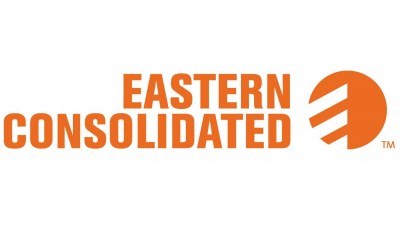8th Street: Downtown’s Main Drag

Most people think Manhattan’s all about the avenues. But if there’s a crosstown “main street” throughout the ages and down to today, it’s 8th Street, says Eastern Consolidated principal Adelaide Polsinelli. The area was a tobacco farm before the city’s grid system was first laid out, starting in the 1830s, says New York Historical Tours co-founder Kevin Draper, who showed us around on a recent afternoon along with Adelaide.

Adelaide knows the area about as well as anyone. She lives nearby and grew up just off 8th Street on MacDougal Street and remembers when Bob Dylan moved to her block in the late ‘70s and had the street closed down for a meet-and-greet with neighbors. Nowadays, open-air tour buses cruise the strip and guides point out bits of history like the 8th Street Coffee (now a Stumptown coffee shop), at 30 West 8th St, where Dylan was first introduced to Allen Ginsberg. And the tourists shop, says Adelaide.

She calls 8th Street west of Fifth Avenue “the best retail value anywhere in the city,” with retailers paying in the ballpark of $75/SF to $200/SF for a variety of spaces, second floor and lower levels that are well-trafficked with a healthy mix of students from colleges like NYU and Cooper Union, an increasingly affluent local population, the occasional celeb and those tourists hopping off buses. Just the other side of Fifth, Adelaide’s marketing 4k SF of retail at 11 Fifth Ave (shown), which she says would be a space that’d work well for an upscale user who wants the prominence of a Fifth Avenue address.

A lot of people think the “original” Whitney Museum is on the Museum Mile. Not so. In 1918, Gertrude Vanderbilt Whitney, heiress to the Vanderbilt estate, opened the first Whitney Museum of American Art at 8-12 West 8th St. She once tried to donate a collection of work that would today be worth many millions to the Met, but it was refused, Kevin says, because American art hadn’t yet come into its own enough to be respected by a museum of that caliber. These days, the original Whitney location is the New York Studio School.

Real estate was king in NYC even in the 1830s, Kevin says. St. Marks Place, the stretch of 8th Street east of Third Avenue, got its name to associate it with St. Marks Church, a couple of blocks north. The church was in those days synonymous with the area’s wealthy upper class. Since then, it’s developed a rep as a bohemian center, with funky stores, some of which, like Trash And Vaudville, remain (although it was announced this summer that T&V soon will be moving a block over, to East 7th Street). Adelaide points out that the St. Mark’s strip is one of the main areas for second-floor and below-grade retail in the city, with rents for second-floor space ticking in around $150/SF to 200/SF.

As we take in the reflection of 770 Broadway from the Minskoff Group’s gleaming 51 Astor Place, just off St. Marks, Kevin gestures across the street to Cooper Union’s Great Hall. That’s where Abe Lincoln first wowed a national audience in 1860.

Cooper Union’s founder, steam engine pioneer Peter Cooper, set up the school in 1859 as an elite training facility for science and the arts that would be free to all who were accepted (the school just recently did start charging tuition, but Kevin says that may not last). Cooper’s financing scheme? Real estate, of course. He bought up land all around the city, much of which is now long-term ground leased. The properties include 51 Astor and the land under the Chrysler Building.

